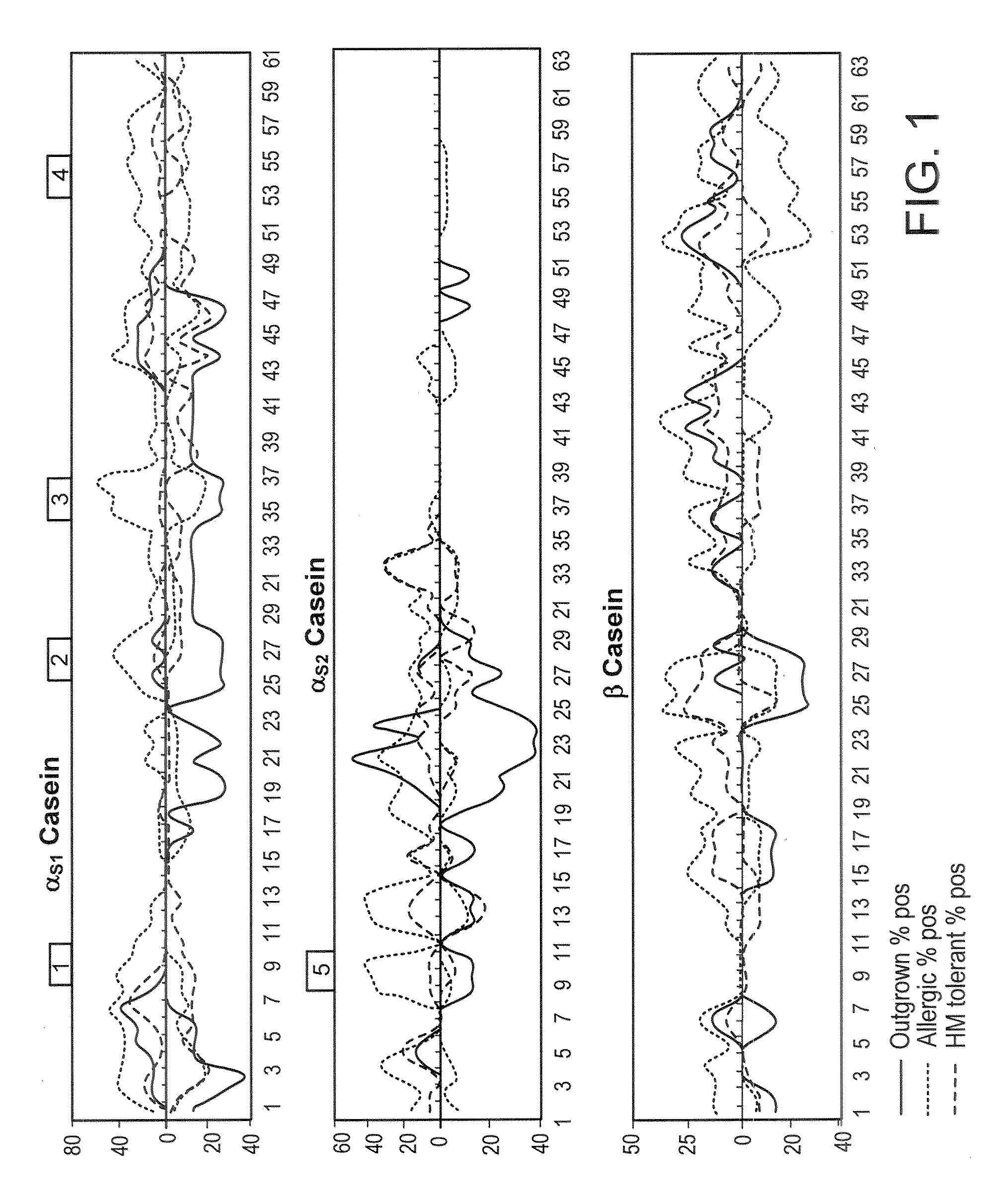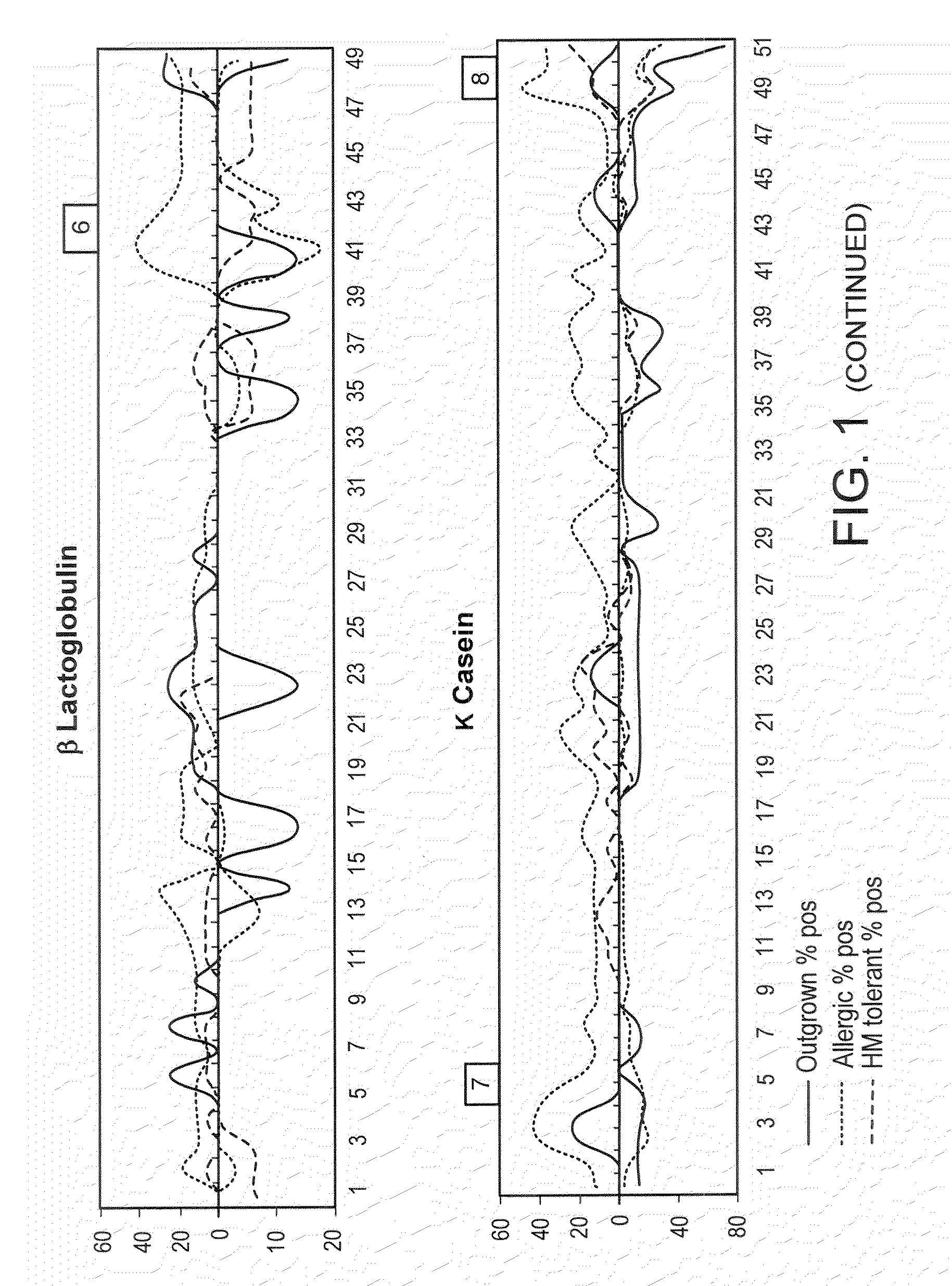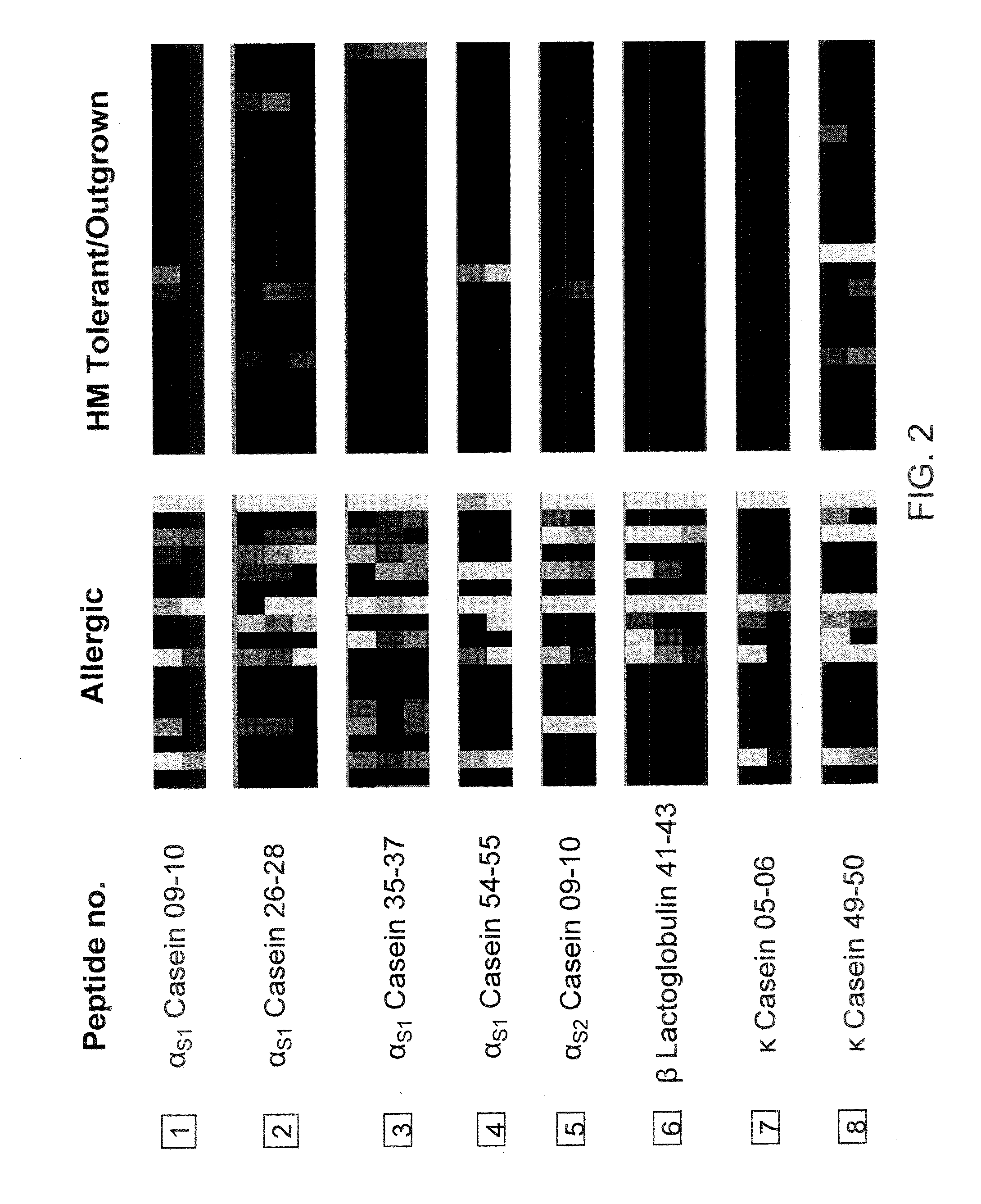Methods For Characterizing Antibody Binding Affinity And Epitope Diversity in Food Allergy
- Summary
- Abstract
- Description
- Claims
- Application Information
AI Technical Summary
Benefits of technology
Problems solved by technology
Method used
Image
Examples
example 1
Materials and Methods
[0197]The following describes the materials and methods employed in Examples 2-4.
[0198]Patient Sera
[0199]Sera previously used for mapping milk protein epitopes by SPOTS membrane technology [3] were used to confirm antigenic areas identified by peptide microarray.
[0200]Clinical Study Subjects
[0201]To assess the correlation between epitope diversity and affinity and clinical phenotype of milk allergy, 41 subjects were recruited from a larger clinical study on the effects of ingesting heat-denatured milk proteins in milk-allergic individuals. Subjects were characterized based on the results of food challenges as “allergic” (reactive to all forms of milk products, n=17), heated cow's milk (HM) tolerant (n=16), or “outgrown” (n=8) their milk allergy. The HM-tolerant group all tolerated heated milk in the form of muffins, waffles and pizza, but reacted to regular cow's milk. Blood samples from subjects were obtained at the time of the initial baseline challenge. Eleve...
example 2
Antigenic Areas Identified by Microarray
[0216]Using the serum samples previously used for SPOTS membrane mapping, it was confirmed that allergenic / antigenic areas identified with the peptide microarray correspond well with previously identified regions. Furthermore, microarray was able to detect binding in some areas where it was undetectable on SPOTS, indicating that microarray can be more sensitive than SPOTS membrane technology (data not shown).
example 3
IgE Diversity Corresponds to Different Phenotypes of Milk Allergy
[0217]Characteristics, including age, gender, and milk IgE profile of the patient samples from the clinical study on the natural history of milk allergy are listed on Table 1, below.
TABLE 1Patient characteristicsOutgrownHeated milk (HM)Allergic(n = 8)tolerant (n = 16)(n = 17)Age (years)Median5.85.7 7.3Mean7.96.6 7.7Range2.61-14.694.84-11.363.43-14.91Gender (F / M)4 / 44 / 129 / 8Milk IgE (kU / L)Median0.91.811.6Mean1.4 3.2327.7Range0.36-3.23 0.35-14.7 0.77->100
[0218]Sera from patients who have outgrown their milk allergy bound fewer milk peptides with IgE as compared to sera from those with persistent milk allergy (allergic patients) (median IgE peptides bound=3.5 vs 17, p=0.062), but there was no difference in IgG4 binding of peptides. As discussed in Example 1, supra, a peptide was determined to be positive if its z-score was greater than 3. The HM tolerant individuals bound significantly fewer IgE peptides than the allergic ...
PUM
| Property | Measurement | Unit |
|---|---|---|
| Temperature | aaaaa | aaaaa |
| Temperature | aaaaa | aaaaa |
| Temperature | aaaaa | aaaaa |
Abstract
Description
Claims
Application Information
 Login to View More
Login to View More - R&D
- Intellectual Property
- Life Sciences
- Materials
- Tech Scout
- Unparalleled Data Quality
- Higher Quality Content
- 60% Fewer Hallucinations
Browse by: Latest US Patents, China's latest patents, Technical Efficacy Thesaurus, Application Domain, Technology Topic, Popular Technical Reports.
© 2025 PatSnap. All rights reserved.Legal|Privacy policy|Modern Slavery Act Transparency Statement|Sitemap|About US| Contact US: help@patsnap.com



